The intensification of U.S.-China competition has captured significant attention in recent years. American attitudes toward China have become more negative during this period, as anger has built over disruptions resulting from the COVID-19 pandemic, Beijing’s trampling of Hong Kong’s autonomy, human rights violations in Xinjiang, and job losses to China.
Amidst this focus on great power competition, two broader trends in the U.S.-China relationship have commanded relatively less attention. The first has been the widening gap in America’s and China’s overall national power relative to every other country in the world. The second has been the continuing thick interdependence between the United States and China, even amidst their growing rivalry. Even on economic issues, where rhetoric and actions around decoupling command the most attention, trade and investment data continue to point stubbornly in the direction of deep interdependence. These trends will impact how competition is conducted between the U.S. and China in the coming years.
Separating from the pack
As America’s unipolarity in the international system has waned, there has been renewed focus on the role of major powers in the international system, including the European Union, Russia, India, and Japan. Each of these powers has a major population and substantial economic weight or military heft, but as my Brookings colleague Bruce Jones has observed, none have all. Only the United States and China possess all these attributes.
The U.S. and China are likely to continue amassing disproportionate weight in the international system going forward. Their growing role in the global economy is fueled largely by both countries’ technology sectors. These two countries have unique traits. These include world-class research expertise, deep capital pools, data abundance, and highly competitive innovation ecosystems. Both are benefitting disproportionately from a clustering effect around technology hubs. For example, of the roughly 4,500 artificial intelligence-involved companies in the world, about half operate in the U.S. and one-third operate in China. According to a widely cited study by PricewaterhouseCoopers, the U.S. and China are set to capture 70% of the $15.7 trillion windfall that AI is expected to add to the global economy by 2030.
The United States and China have been reinvesting their economic gains to varying degrees into research and development for new and emerging technologies that will continue to propel them forward. While it is not foregone that the U.S. and China will remain at the frontier of innovation indefinitely, it also is not clear which other countries might displace them or on what timeline. Overall, China’s economy likely will cool in the coming years relative to its blistering pace of growth in recent decades, but it is not likely to collapse.
Deep interdependence
At the same time, bilateral competition between the United States and China also is intensifying. Even so, rising bilateral friction has not – at least not yet – undone the deep interdependencies that have built up between the two powers over decades.
In the economic realm, trade and investment ties remain significant, even as both countries continue to take steps to limit vulnerabilities from the other. For example, Chinese regulators have been asserting greater control over when and where Chinese companies raise capital; Beijing’s recent probe of ride-hailing app Didi Chuxing provides but the latest example. China’s top leaders have been emphasizing the need for greater technology “self-sufficiency” and have been pouring billions of dollars of state capital into this drive. Meanwhile, U.S. officials have been seeking to limit American investments from going to Chinese companies linked to the military or surveillance sectors. The Security and Exchange Commission’s scrutiny of initial public offerings for Chinese companies and its focus on ensuring Chinese companies meet American accounting standards could result in some currently listed Chinese companies being removed from U.S. exchanges. Both countries have sought to disentangle supply chains around sensitive technologies with national security, and in the American case, human rights dimensions. U.S. officials have sought to raise awareness of the risks for American firms of doing business in Hong Kong and Xinjiang.
Even so, U.S.-China trade and investment ties remain robust. In 2020, China was America’s largest goods trading partner, third largest export market, and largest source of imports. Exports to China supported an estimated 1.2 million jobs in the United States in 2019. Most U.S. companies operating in China report being committed to the China market for the long term.
U.S. investment firms have been increasing their positions in China, following a global trend. BlackRock, J.P. Morgan Chase, Goldman Sachs, and Morgan Stanley have all increased their exposure in China, matching similar efforts by UBS, Nomura Holdings, Credit Suisse, and AXA. The Rhodium Group estimates that U.S. investors held $1.1 trillion in equities issued by Chinese companies, and that there was as much as $3.3 trillion in U.S.-China two-way equity and bond holdings at the end of 2020.
One leg of the U.S.-China economic relationship that has atrophied in recent years has been China’s flow of investment into the United States. This has largely been a product of tightened capital controls in China, growing Chinese government scrutiny of its companies’ offshore investments, and enhanced U.S. screening of Chinese investments for national security concerns.
Another area of U.S.-China interdependence has been knowledge production. As U.S.-China technology expert Matt Sheehan has observed, “With the rise of Chinese talent and capital, the exchange of technological know-how between the United States and China now takes place among private businesses and between individuals.” Leading technology companies in both countries have been building research centers in the other. Alibaba, Baidu, and Tencent have all opened research centers in the United States, just as Apple, Microsoft, Tesla, and other major American technology companies rely upon engineering talent in China.
In science collaboration, The Nature Index ranks the joint research between the two countries as the world’s most academically fertile. U.S.-China scientific collaboration grew by more than 10% each year on average between 2015 and 2019. Even following the global spread of COVID-19, American and Chinese experts collaborated more during the past year than over the previous five years combined. This has led to over 100 co-authored articles in leading scientific journals and frequent joint appearances in science-focused workshops and webinars.
China also is the largest source of international students in the United States. In the 2019-20 year, there were over 370,000 Chinese students in the U.S., representing 34% of international students in colleges and universities. Up until now, many of the top Chinese students have stayed in the United States following graduation and contributed to America’s scientific, technological, and economic development. It remains to be seen whether this trend will continue.
Competitive interdependence
The scale of American and Chinese interests implicated will likely induce sobriety over time in Washington and Beijing as to how the relationship is managed. The U.S. policy focus for the foreseeable future is not likely to be seeking to “defeat” China or compel the collapse of the Chinese Communist Party. Rather, the focus will be on taking steps at home and with partners abroad to strengthen America’s long-term competitiveness vis-à-vis China. At the same time, American leaders will continue to push their Chinese counterparts to improve the treatment of their citizens. Such efforts are definitional to America’s self-identity as a champion of values.
The dense webs formed by trade, financial, scientific, and academic links between the United States and China will make it difficult for one side to inflict harm on the other without hurting itself in the process. As Joe Nye has written, “America can decouple security risks like Huawei from its 5G telecommunications network, but trying to curtail all trade with China would be too costly. And even if breaking apart economic interdependence were possible, we cannot decouple the ecological interdependence that obeys the laws of biology and physics, not politics.”
President Joe Biden likely will use the challenges posed by China as a spur for his domestic resilience agenda. He is not an ideologue, though, and is unlikely to limit his own flexibility by painting the world with permanent black and white dividing lines. The Biden team knows it will be harder to realize progress on serious global challenges like climate change, pandemics, and inclusive global economic recovery without pragmatic dealings with non-democratic states.
Major near-term improvements to the U.S.-China relationship are unlikely, barring an unexpected moderation in Beijing’s behavior. At the same time, the relationship is also unlikely to tip into outright hostility, barring an unforeseen dramatic event, such as a Chinese act of aggression against an American security partner.
U.S.-China relations are going to be hard-nosed and tense. Neither side is likely to offer concessions in service of smoother relations. At the same time, the balance of interests on both sides likely will control hostile impulses, placing the relationship in a state of hardening competition that coexists alongside a mutual awareness that both sides will be impacted — for good or ill — by their capacity to address common challenges.
-
Acknowledgements and disclosures
McCall Mintzer and Kevin Dong provided research and editing assistance on this piece.
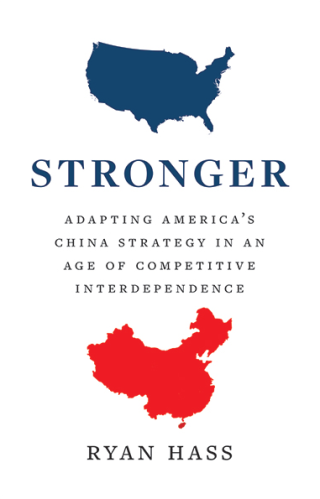
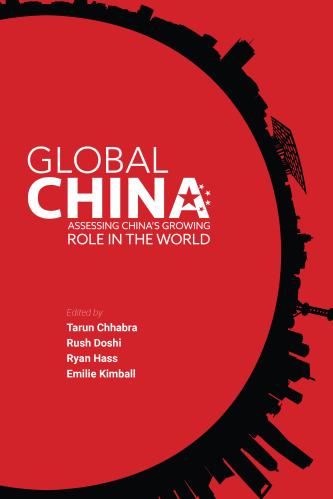
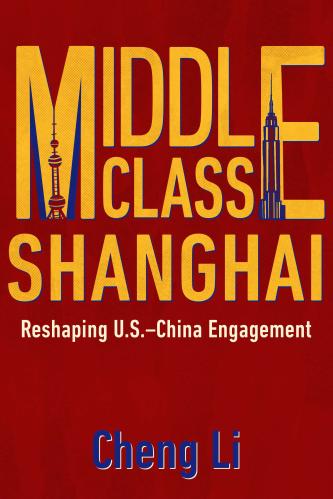


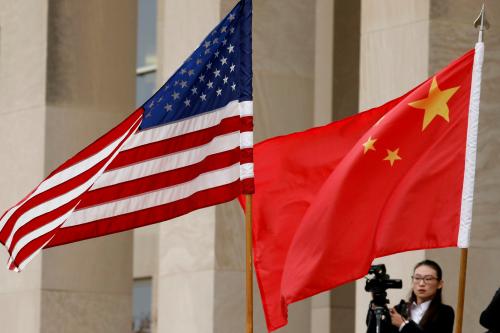


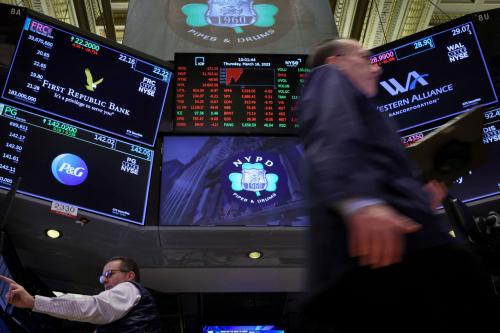
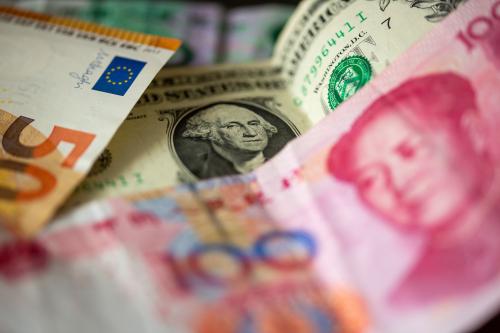
Commentary
The “new normal” in US-China relations: Hardening competition and deep interdependence
August 12, 2021